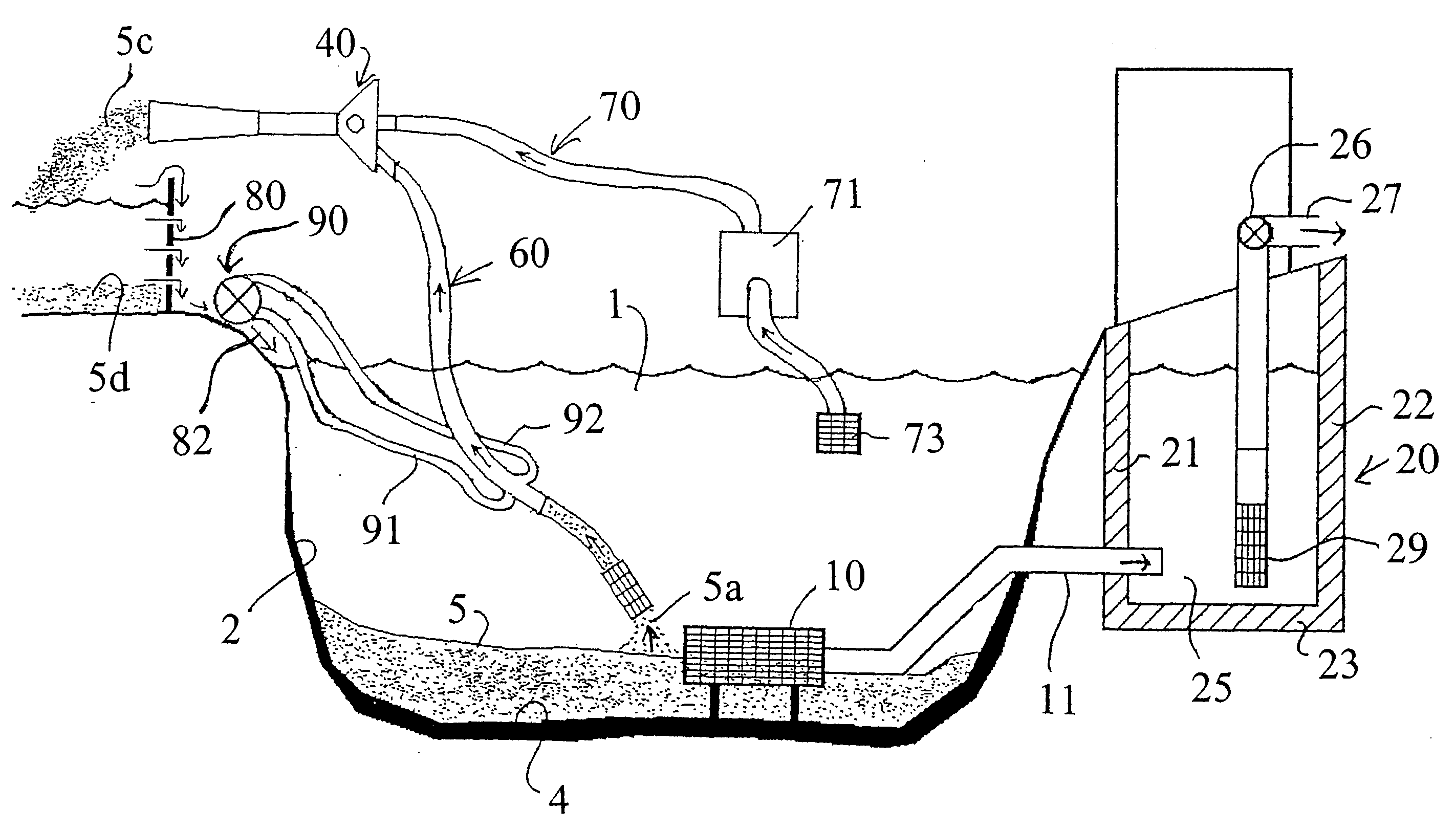Method and apparatus for remediation and prevention of fouling of recirculating water systems by detritus and other debris
a recirculating water system and detritus technology, applied in the direction of water cleaning, mechanical equipment, machines/engines, etc., can solve the problems of allowing the process to continue unabated, detritus, golf balls, algae and all manner of debris accumulate, and the cost of recycled water is typically 40% of the cost, so as to effectively prevent future fouling and avoid the expense, the effect of significant financial savings for golf course operators
- Summary
- Abstract
- Description
- Claims
- Application Information
AI Technical Summary
Benefits of technology
Problems solved by technology
Method used
Image
Examples
Embodiment Construction
[0080] The invention may be “scaled up” dimensionally for larger projects, wherein a larger eductor, larger vacuum line, larger high pressure line are utilized with larger pumps and motors.
[0081] It is also within the scope of the invention to combine two or more pumps to drive a larger eductor in order to utilize a larger diameter suction line. A larger diameter suction line is able to remove larger amounts of the detritus and debris and / or larger diameter pieces of detritus and debris. FIG. 14 illustrates conceptually how eductor 240 is constructed with a 6 inch diameter vacuum line 260. The high pressure water intake line 270 could be either 5 or 6 inches in diameter. Water is pumped into intake line 270 by three pumps 271, 272 and 273 whose outlet lines are joined by three-way close fitting 275 which itself connects directly to intake pressure line 270. In this embodiment, the operational pressure of each pump in psi is equalized to achieve the maximum efficiency of eductor 240...
PUM
 Login to View More
Login to View More Abstract
Description
Claims
Application Information
 Login to View More
Login to View More - R&D
- Intellectual Property
- Life Sciences
- Materials
- Tech Scout
- Unparalleled Data Quality
- Higher Quality Content
- 60% Fewer Hallucinations
Browse by: Latest US Patents, China's latest patents, Technical Efficacy Thesaurus, Application Domain, Technology Topic, Popular Technical Reports.
© 2025 PatSnap. All rights reserved.Legal|Privacy policy|Modern Slavery Act Transparency Statement|Sitemap|About US| Contact US: help@patsnap.com



